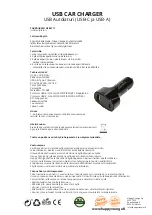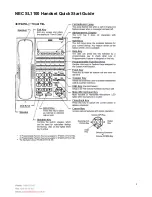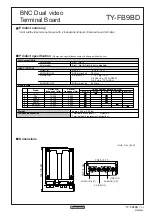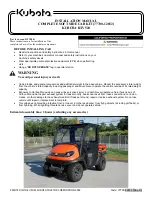
3.1.4. Installation in the table cut-out
Screw the 4 mounting plates
2
on with matching screws (not enclosed).
Adjust the holding angles
4
at the basics module approximately to the tabletop thickness minus 2–3 mm at the basic module,
loosen the 4 panhead screws with spring discs
5
slightly for this and adjust the two holding angles
4
and the 4 adjustment
screws
6
accordingly.
Insert the basic module from below between the fastening bolts of the flat frame.
Caution: Do not pull the moving cable flap from above to keep it from bending.
Attach the two holding angles
4
to the tabletop from below with at least 3 suitable screws each (e. g. Ø 3.5 or Ø 4 mm, possibly
with washer; not enclosed). Now pull the basic module over the 4 adjustment screws
6
evenly and only hand-tight towards the
flat frame, so that the heights of the flaps are precisely aligned with the flat frame.
Caution: Do not over-tighten the adjustment screws
6
to keep the flat frame from bending.
Tighten all screws well
5
.
First insert the flat frame
1
into the cut-out.
Attach the flat frame to the table section from below as
sketched with the enclosed 4 mounting plates
2
, 4 threaded
screws
7
M3 x 25 or M3 x 40 (depending on tabletop thick-
ness), using the respective washers
8
and nuts
9
.
For frameless, flush installation, we recommend using a CNC machine
when producing the table.
The corresponding drawings and the DXF files for
CNC programming can be found in the download area of the
respective basic modules,
http://shop.kindermann.com
Since part of the cut-out edge remains visible after the module has
been installed as well, an additional processing of the edges is
recommended.
5
7
2
8
9
2
3
6
5
4
1
3.1.5. Table cut-out for frameless, flush Installation
7
2
CablePort flex
Tischausschnitt X
Tischausschnitt Y
Tischplattenstärke Z
Basic module 4-fold
7448 000 030
According to plan
Tol2/10 mm
According to plan
Tol2/10 mm
15 - 40 mm
Basic module 6-fold
7448 000 040
According to plan
Tol2/10 mm
According to plan
Tol2/10 mm
15 - 40 mm

































